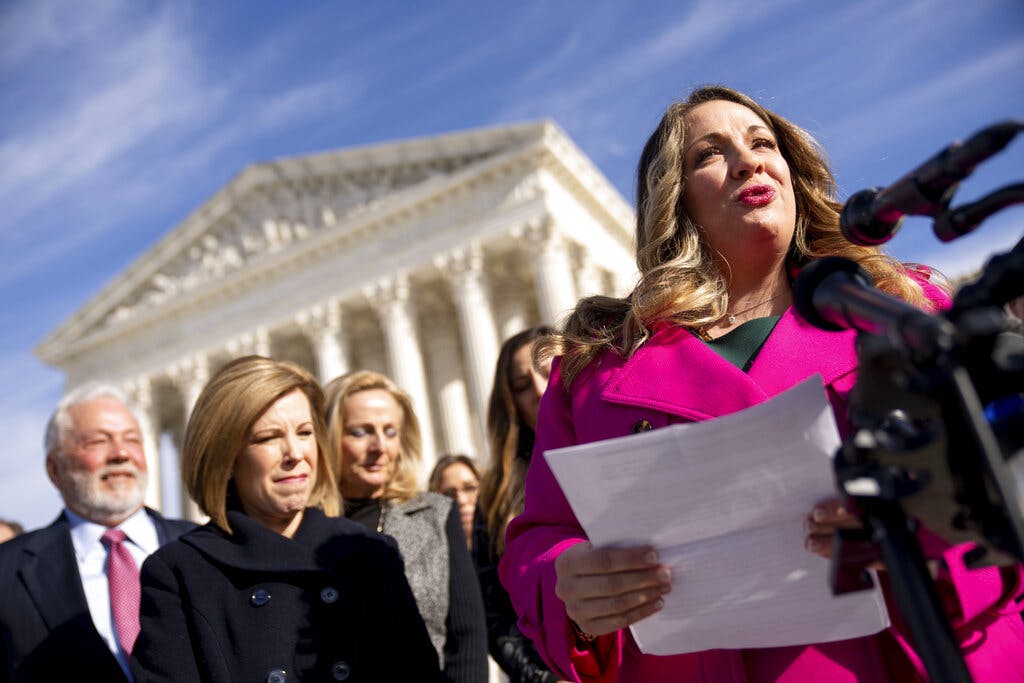How Does the Supreme Court Look Through the Prism of Classical Liberalism?
The Supreme Court, in its case involving a Christian web designer, features a direct clash between the First Amendment and anti-discrimination laws.

Imagine if a man and a woman decided to marry and tried to hire a caterer. The caterer asks: “Are either of you divorced?” When the woman said she had a brief marriage and amicable divorce 10 years earlier, the caterer says that her religion prohibited her from in any way participating in the marriage of a divorced person.
Would the Supreme Court have upheld that claim in the face of a statute that prohibited discrimination based on marital status? What if the couple that sought to get married consisted of a white man and the black woman, and the caterer refused on the ground that her religion prohibited interracial marriage?
There are two profound issues raised by these questions. First, does the Supreme Court decision extend beyond artistic endeavors such as that claim by the web designer who won her case today? Second, whether claimed religious justifications have to be somehow valid in the eyes of a court. Could a court distinguish between mainstream Catholic views against divorce and extremist religious views that justify racial segregation?
In the case decided today by the Supreme Court, there was a direct clash between the First Amendment and anti-discrimination laws. There can be little doubt that the First Amendment prevents the state from coercing anyone, religious or otherwise, from expressing views with which they disagree. And creating a website is, at least in the view of the plaintiff, the expression of a constitutionally protected viewpoint.
Would the same conclusion flow, however, if the web maker wanted to express the view that interracial marriage is prohibited by the Bible? The answer to that question must be yes, since the First Amendment doesn’t discriminate among viewpoints.
As Chief Justice Rehnquist once put it: ”Under the First Amendment there is no such thing as a false idea. However pernicious an opinion may seem, we depend for its correction not on the conscience of judges and juries but on the competition of other ideas.”
That is just as true of religious opinions as it is political, philosophical and personal ones. What if no artistic expression is at issue? For example, what if a family-owned hotel refused to rent rooms to Blacks, Jews, Muslims or Atheists on the basis of their religious views? The Supreme Court didn’t reach that case but lower courts will surely be asked to extend the decision to non-artistic objections.
Supreme Court decisions tend to take on a life of their own, especially since the justices review very few cases and tend not to follow up on their decisions in their immediate aftermath. Thus lower courts have relatively free rein to interpret the often ambiguous rulings by which they are technically bound but realistically free to expand or contract.
This will surely be the case with two of the major decisions decided in the final days of the Court’s session: one involving gay marriage; and the other involving the use of race in university admissions. In both cases the court left open the possibility that their rulings will be interpreted quite differently by various lower courts.
The broad messages of both opinions are clear: the religious exception decision is part of a growing trend at the high court toward emphasizing the free exercise clause of the First Amendment at the expense of the non-Establishment Clause. The trend had been the opposite during the 1960s and 1970s. Yet now it is clear that religion will generally win.
The second discernible trend is away from the use of race in decisions made by state actors. This trend has been obvious now for several decades, as the Supreme Court vacillated over whether and how race can be used in various contexts.
It is likely that this trend will continue, as universities try to figure out how they can maintain their racial quotas — and they are quotas despite fervent denials — without explicitly employing race as a criteria.
There was a third decision decided today, the final day of the court’s season, that also represents an important trend. The Court struck down President Biden’s order granting relief to students who had academic loans. This trend represents a movement away from executive authority and toward legislative authority.
Congress will now have to be clearer and more explicit when it authorizes the President or any executive agency to exercise powers that are constitutionally reserved to the legislature.
Although these decisions, and several other important ones released over the past months, have generally been decided along what the press calls liberal-conservative lines, they don’t reflect the difference between classic liberalism and classic conservatism.
Classic liberalism would favor the decision prohibiting the use of race, even though the three “liberals” dissented. Classic liberalism might also support the preference for legislative over executive power. And finally classic liberalism would at least be conflicted over compelling a religious objector to violate his or her principles.

